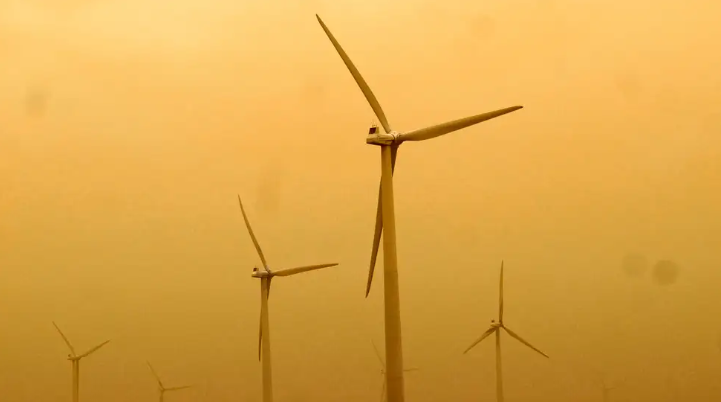Representational image
(P. Sreedharan/BCCL, TOI, Coimbatore)
"My battery is low and it's getting dark."
"My power's really low, so this may be the last image I can send. Don't worry about me though: my time here has been both productive and serene. If I can keep talking to my mission team, I will – but I'll be signing off here soon. Thanks for staying with me."
We don't know about you, but few things have cut as deep as the Opportunity rover's low-battery interpretation back in 2019. And now, NASA's InSight Lander bid us adieu just a few days back, resigning to the same heart-wrenching fate as its rover cousin. Who's that chopping onions out there?!
Both of these robots succumbed due to similar reasons — the lack of a reliable power source to keep their solar-powered batteries afloat for long periods atop the Red Planet. And while we can salute these rovers for their valuable and solitary service, we also need to ensure we fix this problem pronto to avoid the potential grief of laying another Martian robo-friend to rest.
Luckily, there's good news on that front. New studies have revealed that wind turbines are still a potential and reliable energy source despite Mars' relatively thin atmosphere. Well, at least more reliable than what we have right now.
Having a stable and adequate power source will obviously help much more than keeping robots roboting for longer. Electricity literally fuels scientific research and exploration on extraterrestrial bodies, while also enabling a certain well-known billionaire's dream of conquering the Red Planet. In addition, it could help provide the energy needed for future manned missions.
However, solar technology has literally been collecting dust in the Martian dusty landscape over the last few decades of space exploration due to the planet's frequent storms, making it less-than-ideal for extended missions. In addition, setting up and harnessing nuclear energy from an adequately sized plant is simply too dangerous and, frankly, a pain in the nether regions.
This artists concept illustrates a Martian dust storm, which might also crackle with electricity.(NASA)
Therefore, we might have to rely on wind energy to add some gust under our Martian sails. For solutions, NASA engineers turned to the Mars Global Climate Model, which predicts wind speed and density over different parts of the planet.
The density is important because the planet's thin atmosphere lends lesser of a push to the turbine's blades than here on Earth. Imagine how much farther you'd be able to push a box if you hurled a tennis ball at it, than if you threw one of those yellow, spongy (hence, less dense) smiley balls.
The scientists found that wind speeds increase dramatically just 50 metres off the Martian ground, meaning tall turbines could be an excellent piece to the energy puzzle. In addition, winter nights are incredibly long in mid to polar latitudes; therefore, wind farms in these areas become essential due to the limited solar power potential.
Serendipitously, most Martian water is concentrated around its poles, making them exceedingly interesting places for scientific research. And while the planet’s frequent dust storms might be a solar panel's bane, it only helps amp up energy generation for wind farms.
According to the study, a good solar-wind generator mix could provide enough power to exceed estimated mission energy requirements at least 60-90% of the time. This is a vast improvement from current conditions, where only solar panels supply enough during 40% of the mission's functioning time.
Of course, the type of turbines will have to be tailored to Mars' landscape and extreme atmospheric conditions. And there is the issue of how the heck we'll carry all the parts there anyway. But out-of-the-world questions will obviously require out-of-the-box thinking as well.
Considering the breakneck speed at which the technology has been advancing in recent times, however, drinking a Martian Sex on the Beach chilled using wind energy-powered fridges with a martian rover pet doesn't seem too far away at all.

